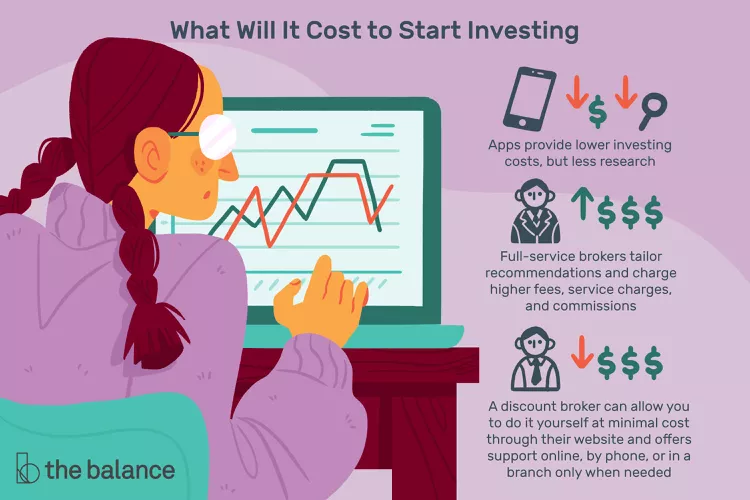A Beginner’s Guide to Investing in Stocks

Investing in stocks can be an efficient way to build wealth over time. Learning how to invest wisely and patiently over a lifetime can yield returns that far outpace the most modest income. Numerous members of the Forbes 400 wealthiest Americans made the list in 2021 because they owned a large block of shares in a public or private corporation.
It all starts with understanding how the stock market works, what your investment goals are, and whether you can handle a lot or just a little bit of risk.
What Are Stocks?
Stocks are equity investments that represent legal ownership in a company. You become part owner of the company when you purchase shares.
Corporations issue stock to raise money, and it comes in two variations: common or preferred. Common stock entitles the stockholder to a proportionate share of a company’s profits or losses, while preferred stock comes with a predetermined dividend payment.

Investing in Stocks
You can profit from owning stocks when the share price increases, or from quarterly dividend payments. Investments accumulate over time and can yield a solid return due to compound interest, which allows your interest to begin earning interest.
For example, you might make an initial investment of $1,000, and you plan to add $100 every month for 20 years. You’d end up with $75,457.50 after 20 years, even though you only contributed $25,000 over time, provided you see an annual return of 10% interest.
Benjamin Graham is known as the father of value investing, and he’s preached that the real money in investing will have to be made—as most of it has been in the past—not by buying and selling, but from owning and holding securities, receiving interest and dividends, and benefiting from their long-term increase in value.
Why Stock Prices Fluctuate
The stock market works like an auction. Buyers and sellers can be individuals, corporations, or governments. The price of a stock will go down when there are more sellers than buyers. The price will go up when there are more buyers than sellers.
A company’s performance doesn’t directly influence its stock price. Investors’ reactions to the performance decide how a stock price fluctuates. More people will want to own the stock if a company is performing well, consequently driving up the price. The opposite is true when a company underperforms.
Stock Market Capitalization
A stock’s market capitalization ( or “market cap”) is the sum of the total shares outstanding, multiplied by the share price. For example, a company’s market cap would be $50 million if it has one million outstanding shares priced at $50 each.
Market cap has more meaning than the share price, because it allows you to evaluate a company in the context of similarly sized companies in its industry. A small-cap company with a capitalization of $500 million shouldn’t be compared to a large-cap company worth $10 billion.
Stock Splits
A stock split occurs when a company increases its total shares by dividing up the ones it currently has. This is typically done on a two-to-one ratio.
For example, you might own 100 shares of a stock priced at $80 per share. You’d have 200 shares priced at $40 each if there were a stock split. The number of shares changes, but the overall value of your holdings remains the same.
Stock splits sometimes occur when prices are increasing in a way that deters and disadvantages smaller investors. They can also keep the trading volume up by creating a larger buying pool.
Stock Value vs. Price
A company’s stock price has nothing to do with its value. A $50 stock could be more valuable than an $800 stock because the share price means nothing on its own.
The relationship of price-to-earnings and net assets is what determines if a stock is overvalued or undervalued. Companies can keep prices artificially high by never conducting a stock split, yet not have the underlying foundational support. Make no assumptions based on price alone.
What Are Dividends?
Dividends are usually cash payments that many companies send out to their shareholders. Dividend investing refers to portfolios containing stocks that consistently issue dividend payments throughout the years. These stocks produce a reliable passive income stream that can be beneficial in retirement.
You can’t judge a stock by its dividend alone, however. Sometimes, companies increase dividends as a way to attract investors when the underlying company is in trouble.
Blue-Chip Stocks
Blue-chip stocks—which get their name from poker, where the most valuable chip color is blue—are well-known, well-established companies that have histories of paying out consistent dividends regardless of the economic conditions.
Investors like them because they tend to grow dividend rates more quickly than the rate of inflation. An owner increases income without having to buy another share. Blue-chip stocks aren’t necessarily flashy, but they usually have solid balance sheets and steady returns.
Preferred Stocks
Preferred stocks are very different from the shares of the common stock most investors own. Holders of preferred stock are always the first to receive dividends, and they’ll be the first shareholders to get paid in cases of bankruptcy. The stock price doesn’t fluctuate the way common stock does, however, so some gains can be missed on companies with hypergrowth.
Preferred shareholders also get no voting rights in company elections.
Finding Stocks for Your Portfolio
Investment ideas can come from many places. You can turn to companies like Standard & Poor’s (S&P) or other online resources that might tell you about up-and-coming companies if you want guidance from professional research services. You can take a look at your surroundings and see what people are interested in buying if spending your time browsing investment websites doesn’t sound appealing.
Look for trends and for the companies that are in positions to benefit you. Stroll the aisles of your grocery store with an eye for what’s emerging. Ask your family members what products and services they’re most interested in and why.
How To Buy Stocks
You can buy stock directly using a brokerage account or one of the many available investment apps. These platforms give you the options to buy, sell, and store your purchased stocks on your home computer or smartphone. The only differences among them are mostly in fees and available resources.
Both traditional brokerage companies such as Fidelity and TD Ameritrade, and newer apps such as Robinhood and Webull offer zero-commission trades from time to time. That makes it a lot easier to buy stocks without the worry of commissions eating into your returns down the line.
Use Your Retirement Account
Another way to invest in stocks is through your retirement account. Your employer might offer a 401(k) or 403(b) retirement plan as part of your benefits package. These accounts invest your money for retirement, but your investment options are typically limited to the choices provided by your employer and the plan provider.
Choosing a Stockbroker
There are two types of stockbrokers: full-service and discount.
- Full-service brokers tailor recommendations and charge higher fees, service charges, and commissions. Most investors are willing to pay these higher fees because of the research and resources these companies provide.
- The majority of research responsibility falls on the investor with a discount broker. The broker just provides a platform to perform trades and customer support when needed.
Newer investors can benefit from the resources provided by full-service brokers, while frequent traders and experienced investors who perform their own research might lean toward platforms with no commission fees.
A money manager might also be an option. Money managers select and buy the stocks for you, and you pay them a hefty fee—usually a percentage of your total portfolio. This arrangement takes the least amount of time, because you can meet with them just once or twice a year if the manager does well.
Selling Stocks
Knowing when to sell is just as important as buying stocks. Most investors buy when the stock market is rising and sell when it’s falling, but a wise investor follows a strategy based on their financial needs.
Keep an eye on the major market indices. The three largest U.S. indices are:
- The Dow Jones Industrial Average
- The S&P 500
- The Nasdaq
Don’t panic if they enter a correction or a crash. These events don’t tend to last very long, and history has shown that the market will climb again. Losing money is never fun, but it’s smart to weather the storm of a down market and hold onto your investments, because they will probably rise again.
The Bottom Line
Learning how to invest in stocks might take a little time, but you’ll be on your way to building your wealth when you get the hang of it. Read various investment websites, test out different brokers and stock-trading apps, and diversify your portfolio to hedge against risk. Keep your risk tolerance and financial goals in mind, and you’ll be able to call yourself a shareholder before you know it.
Frequently Asked Questions (FAQs)
What are penny stocks?
Penny stocks, also known as microcap stocks, are low-priced shares in small companies. The SEC warns that these stocks can be extremely volatile and difficult to trade once you own them. Be extremely cautious about investing in penny stocks.
What is volume in stocks?
Volume measures the number of shares traded in a given time period. It typically denotes the amount traded in a single trading day. Growth in trade volume for a given stock is typically seen as a sign of strength.
How many stocks should you own?
While there is no exact number of stocks every investor should own, many experts recommend somewhere between 10 and 30 stocks. The basic rule of thumb is to try to achieve enough diversity in your portfolio to protect yourself from losses while not spreading your investments too thin. The ideal number of stocks for you is the number that achieves this goal.
